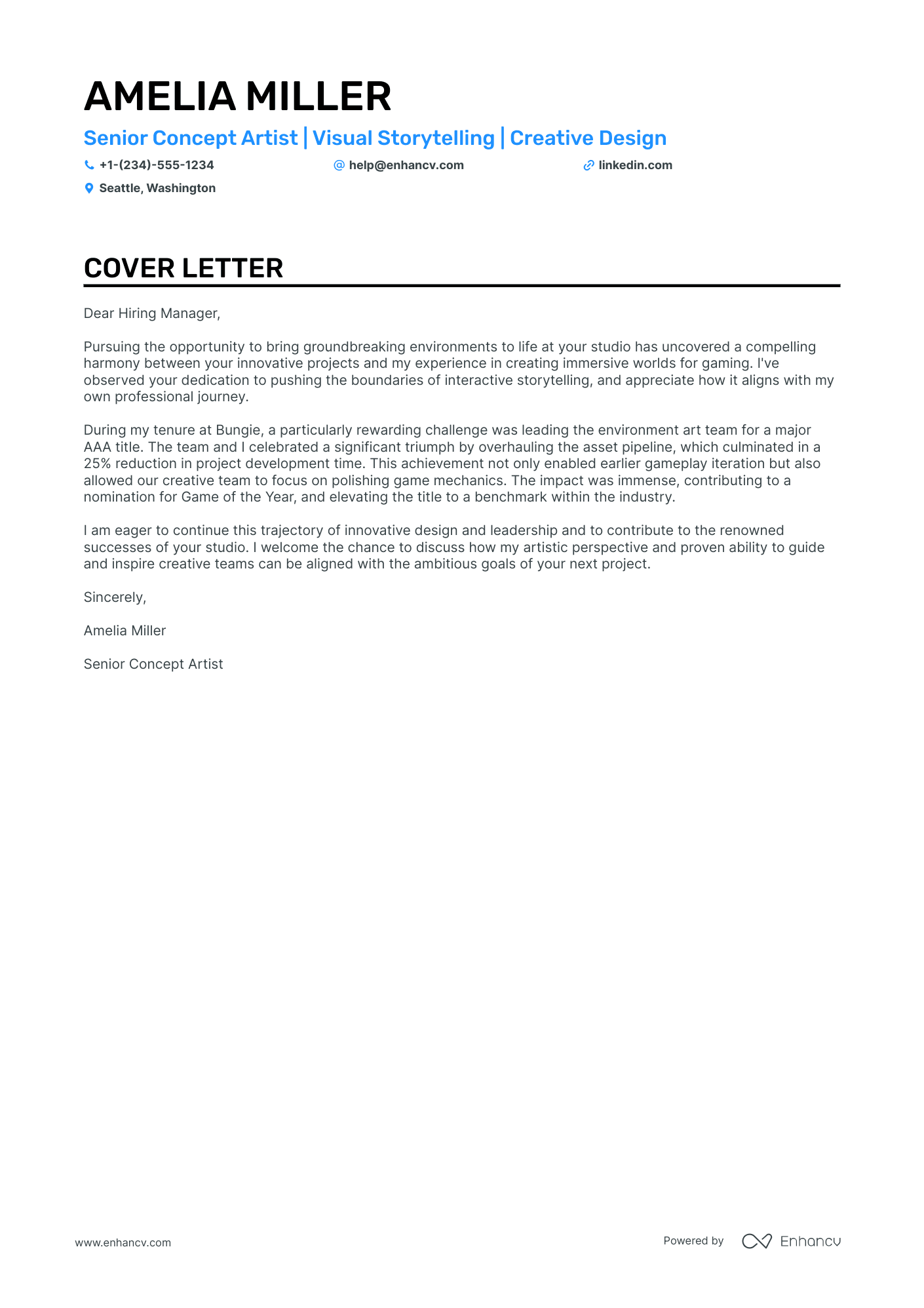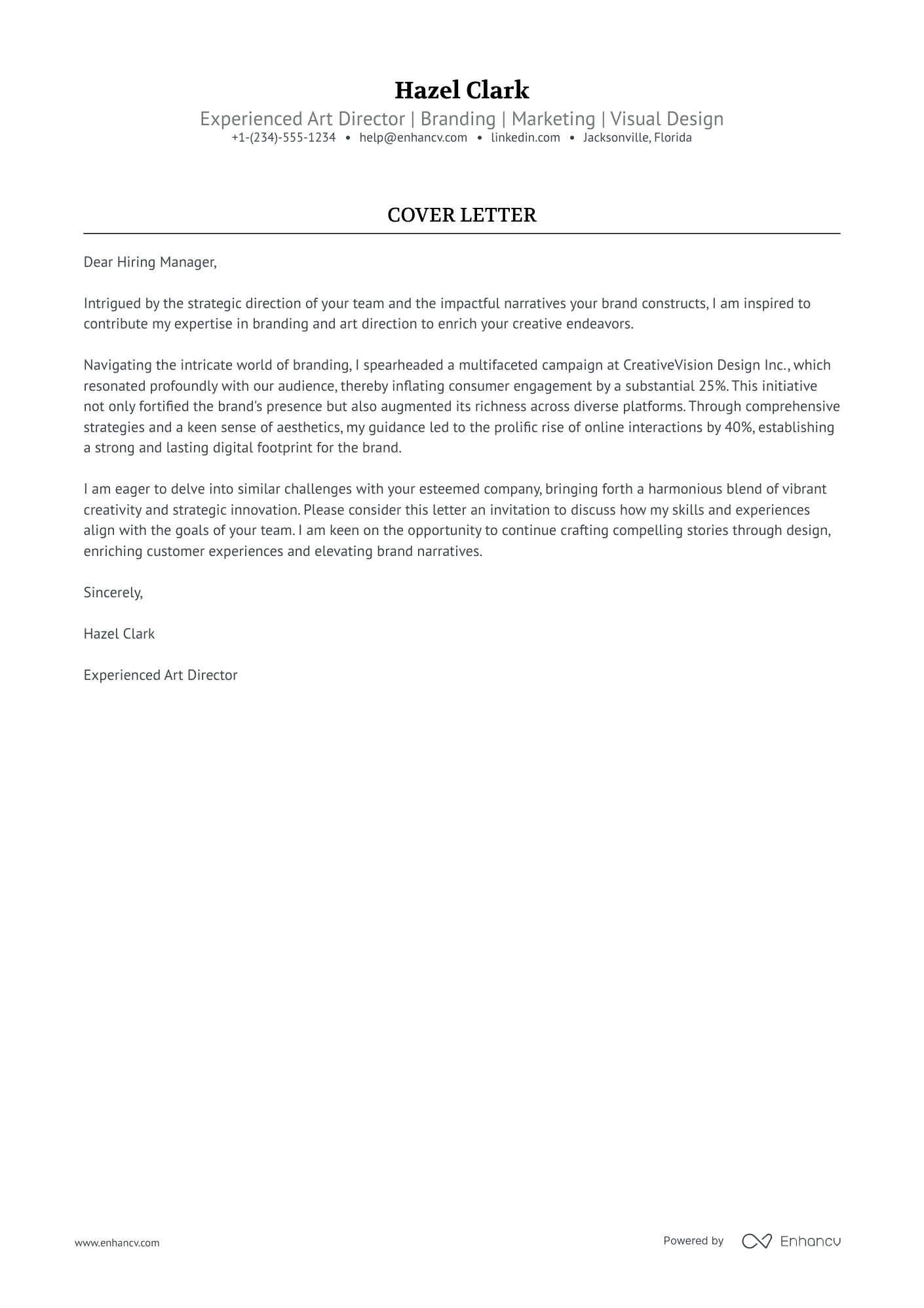Crafting an artist cover letter can be a daunting task, especially when you realize it's a crucial piece of your job application puzzle. You've got your resume perfected, but now you're faced with the challenge of encapsulating your proudest professional moment into an engaging narrative. This isn't just about rehashing your CV; it's about telling your unique story without falling into the trap of tired clichés. Remember, it's imperative to keep it concise—aim for a single page that makes a lasting impression. Let's dive in and ensure your cover letter stands out in a sea of sameness.
- Writing the essential artist cover letter sections: balancing your professionalism and personality;
- Mixing storytelling, your unique skill set, and your greatest achievement;
- Providing relevant (and interesting) information with your artist cover letter, despite your lack of professional experience;
- Finding the perfect format for your[ artist cover letter, using templates from industry experts.
Leverage the power of Enhancv's AI: upload your resume and our platform will map out how your artist cover letter should look, in mere moments.
If the artist isn't exactly the one you're looking for we have a plethora of cover letter examples for jobs like this one:
- Artist resume guide and example
- Video Producer cover letter example
- Technical Theatre cover letter example
- Ballet Dancer cover letter example
- Filmmaker cover letter example
- Band Director cover letter example
- Performing Arts cover letter example
- Musical Theatre cover letter example
- Film Production cover letter example
- Commercial Actor cover letter example
- Theater cover letter example
Drop your resume here or choose a file.
PDF & DOCX only. Max 2MB file size.
Artist cover letter example
Abigail Hall
San Francisco, California
+1-(234)-555-1234
help@enhancv.com
- Relevant Experience: The cover letter mentions specific experience working at a prestigious company (e.g., Pixar Animation Studios), which is likely to catch the attention of the hiring manager. The candidate highlights their role in a successful, high-profile project, demonstrating their capability and experience in the industry.
- Quantifiable Achievements: Including a measurable achievement (e.g., improving the storyboard revision process to cut production times by 15%) shows the candidate's impact on efficiency and provides concrete evidence of their skills and results-oriented approach.
- Alignment with Company's Philosophy: The candidate expresses an understanding of and alignment with the studio's focus on narrative-driven projects. This suggests that the candidate is a good cultural fit and has a genuine interest in the type of work the studio produces.
Designing your artist cover letter: what is the best format
Let's start with the basics, your artist cover letter should include your:
- Header
- Greeting
- Introduction
- Body paragraph
- Closing statement
- Signature (that's not a must)
Next, we'll move to the spacing of your artist cover letter, and yes, it should be single-spaced (automatically formatted for you in our cover letter templates).
Don't go for a old-school font (e.g. Arial or Times New Roman), but instead, pick an ATS-favorite like Chivo, Volkhov, or Raleway, to stand out.
Our cover letter builder is also set up for you with the standard one-inch margin, all around the text.
Finally, ensure your artist resume and cover letter are in the same font and are submitted in PDF (to keep the formatting in place).
P.S. The Applicant Tracker System (or ATS) won't be assessing your [job] cover letter, it's solely for the recruiters' eyes.
Struggling to find time to write a cover letter? Try our free cover letter generator to create one in just seconds, straight from your resume.
The top sections on a artist cover letter
- Header: Include your name, address, contact information, and date, making it easy for the recruiter to identify and reach out to you.
- Greeting: Address the recruiter or hiring manager by name whenever possible, as personalization demonstrates that you’ve researched the company and are serious about the application.
- Opening Paragraph: Clearly state the position you are applying for and provide a brief introduction to who you are as an artist, piquing the recruiter's interest in your unique creative identity.
- Body: Highlight specific projects or experiences that showcase your artistic skills, creativity, and any notable collaborations or exhibitions that align with the style or ethos of the organization you’re applying to.
- Closing: Summarize your enthusiasm for the opportunity and provide a call to action, such as requesting an interview or a chance to discuss your portfolio, showing your eagerness to engage further with the organization.
Key qualities recruiters search for in a candidate’s cover letter
- Strong Creative and Artistic Skills: Demonstrates originality and the ability to conceptualize and create compelling art pieces.
- Knowledge of Various Artistic Mediums: Shows versatility and proficiency in using different materials and techniques.
- Understanding of Art History and Current art trends: Indicates a well-rounded foundation and the ability to draw inspiration or challenge contemporary art directions.
- Proven Exhibition and Gallery Experience: Exhibits a track record of presenting art in professional settings, which is crucial for public exposure and sales.
- Ability to Communicate Conceptual Ideas: Reflects the talent to articulate the concepts and stories behind artworks, essential for engaging with galleries, collectors, and the public.
- Self-Promotion and Networking Skills: Demonstrates an understanding of the importance of self-marketing and the ability to form relationships within the art community to advance an artistic career.
What matters most when tailoring your artist cover letter salutation
Your artist cover letter greeting should feel welcoming to recruiters.
Use their first name (e.g. "Dear Marshall" or "Dear Sara"), if you've previously been in touch with the hiring manager and are on a more friendly basis.
If this is the first time you're contacting the recruiters, start your artist cover letter with:
- their last name (e.g. "Dear Ms. Ali" or "Dear Mr. Stevens") - look up who's the hiring manager for the role on social media or the company website;
- generalized greeting (e.g. "Dear HR Team") - just don't use "To whom it may concern" or "Dear Sir/Madam".
List of salutations you can use
- Dear [Recipient's Name],
- Dear Hiring Manager,
- Dear [Department Name] Team,
- Dear [Company Name] Recruiter,
- Dear [Recipient's Professional Title],
- Dear [Recipient's Full Name],
Introducing your profile to catch recruiters' attention in no more than two sentences
The introduction of your artist cover letter is a whole Catch 22 .
You have an allocated space of no more than just a paragraph (of up to two sentences). With your introduction, you have to stand out and show why you're the best candidate out there.
Set out on a journey with your artist cover letter by focusing on why you're passionate about the job. Match your personal skills and interests to the role.
Another option for your artist cover letter introduction is to show you're the ideal candidate. Write about how your achievements and skills are precisely what the company is looking for.
However you decide to start your artist cover letter, always remember to write about the value you'd bring about. Making it both tangible (with your metrics of success) and highly sought out.
How to select your best achievement for the middle, or the artist cover letter body
You probably feel exhausted by this point in your application: you've dived into all the details of your success and skills in your artist resume.
What else can you include in your artist cover letter body?
Well, for starters, the next three to six paragraphs should show you further value as a professional. Or, why should recruiters choose you?
Think back on a noteworthy achievement that answers key job requirements and dive deep.
Structure your artist cover letter middle as you'd a story: following chronological logic and highlighting outcomes, thanks to skills.
At the end of the day, you'd want recruiters to be able to see you as the best candidate for the role and understand more about who you are and what makes your success unique (and valuable to the role).
Two ideas on how to end the final paragraph of your artist cover letter
Closing your artist cover letter, you want to leave a memorable impression on recruiters, that you're a responsible professional.
End your cover letter with how you envision your growth, as part of the company. Make realistic promises on what you plan to achieve, potentially, in the next six months to a year.
Before your signature, you could also signal hiring managers that you're available for the next steps. Or, a follow-up call, during which you could further clarify your experience or professional value.
No experience artist cover letter: making the most out of your profile
Candidates who happen to have no professional experience use their artist cover letter to stand out.
Instead of focusing on a professional achievement, aim to quantify all the relevant, transferrable skills from your life experience.
Once again, the best practice to do so would be to select an accomplishment - from your whole career history.
Another option would be to plan out your career goals and objectives: how do you see yourself growing, as a professional, in the next five years, thanks to this opportunity?
Be precise and concise about your dreams, and align them with the company vision.
Key takeaways
Winning recruiters over shouldn't be difficult if you use your artist cover letter to tell a story that:
- Is personalized by greeting your readers and focusing on key job skills greets;
- Isn't spread all over the place, but instead focuses on one key achievement and selling your value as a professional;
- Introduces your enthusiasm for the role, passion for the job, or creativity in communication;
- Is also visually appealing - meeting the best HR practices;
- Ends with a nod to the future and how you envision your growth, as part of the company.
Artist cover letter examples
By Role















